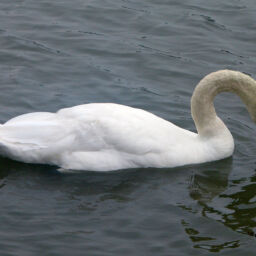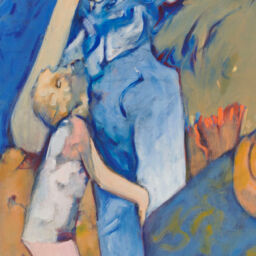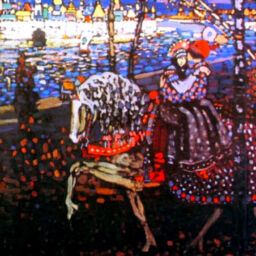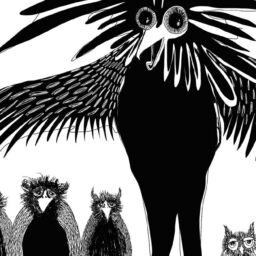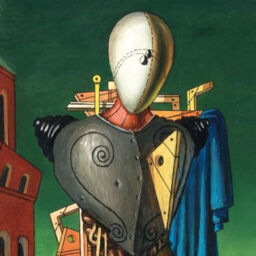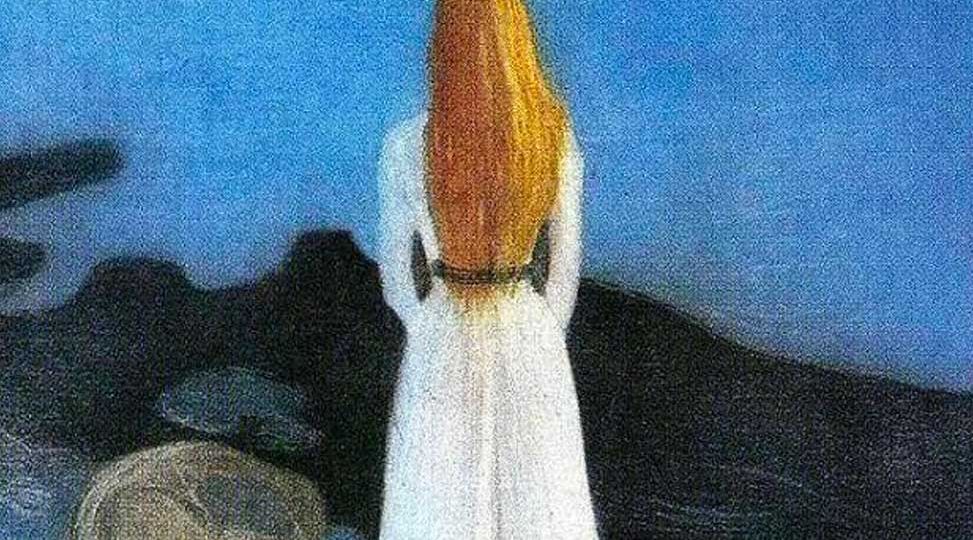
The English Patient in the Mirror
An INTJ Journey of Self-Discovery
Tamara Walker, July 3, 2019

Mirrors
Ondaatje makes a cryptic comment: “A novel is a mirror walking down the road” (1992, p. 91). Mirrors—real and metaphorical—and their references to hidden identity appear throughout The English Patient. In fact, the plot intertwines two mirroring love stories. These stories replicate how consciousness and the unconscious intertwine, and the characters from the past shadow the ones in the present, similar to the way egodystonic functions shadow egosyntonic functions in Beebe’s (2005) eight-function eight-archetype model. The story opens in a bombed-out Italian villa as WWII is ending. Hana, a young wartime nurse, has left her nursing company against advice in order to tend to the English patient: a man who has been burned beyond recognition and is dying. Hana is joined by two other men: Kip, a Sikh working for the British Army as a sapper deactivating bombs, and Caravaggio, a beloved childhood “uncle” and friend of her dead father. A love story between Hana and Kip unfolds in linear time while another is told through flashbacks by the English patient as he recalls his tragic love for Katharine, the wife of his colleague Geoffrey Clifton. We gradually learn the English patient is actually Almásy, a Hungarian explorer who was mapping the Sahara just before the war. Geoffrey, consumed by jealousy, dies trying to kill himself, Katharine, and Almásy by intentionally crashing his airplane into the desert. Almásy is unharmed, but Katharine is wounded, and he must leave her in a desert cave covered in rock paintings while he seeks help. Caught in events he cannot control, she dies where he left her, and he becomes insanely driven to recover her dead body. However, during this mission, his airplane malfunctions and he plummets to earth in a ball of flames.
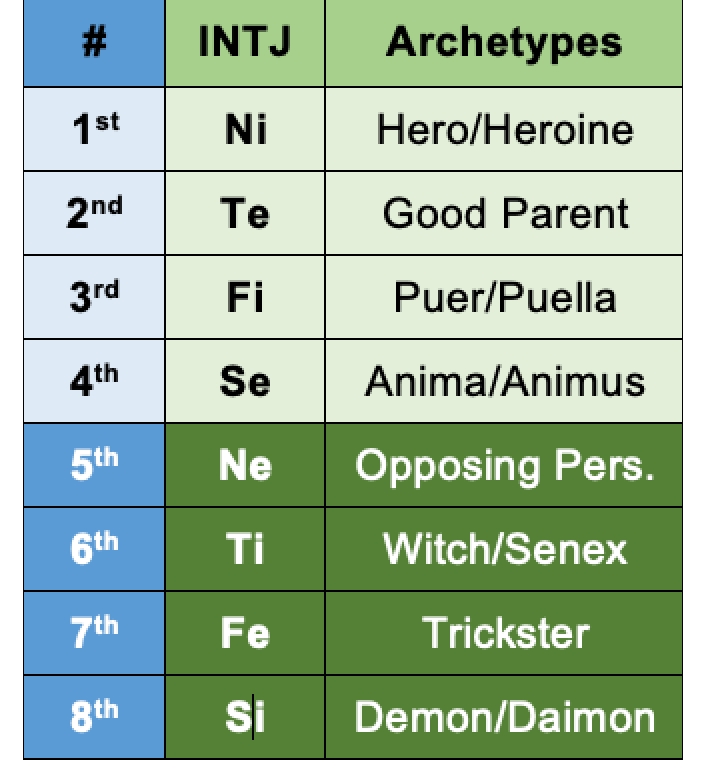
Two red ochre handprints on a rock wall have been my life’s most numinous experience of the mysterious power of introverted intuition. Preparing for a four-day wilderness fast, I was gifted this image, and several months later, I hosted a ritual to honor my upcoming quest. With assistance, I created a cloth of natural pigment handprints that accompanied me into the southwest desert. On my first day alone and without food, I was caught in a flash flood and forced to seek shelter in a cave that I discovered downstream from my intended camp. There, to my amazement, I discovered the same two red ochre handprints, just as I had imagined them. For the past eight years, these prints have been the focal image of my life journey and ultimately led me to change professions from veterinary surgery to depth psychology. Near the end of this decade, as I was watching the film The English Patient (Zaentz & Minghella, 1996), I had a shocking moment of revelation. As the fictional Almásy searches for famous ancient rock art paintings in the Libyan Sahara, he steps into the darkness of a cave, and his flashlight catches what he has long been seeking. Seeing Almásy’s light play across the irregular rock surface and reveal the beautiful images, I realized my rock wall hands had somehow originated here, in this story, so many years earlier. I felt compelled to follow this intuition and learn what secrets it might reveal.

The Burning Fire of the Animus: The English Patient
It is not coincidental that when I started to consider each character in The English Patient as representative of a function in Beebe’s model, I was unsure which function Hana best represented, and so began my investigation of her using von Franz’ advice: if you are having difficulty finding the superior function, look for the inferior one first (1971, p.16). The first clue that extraverted sensation (Se) may be Hana’s inferior function appears just a few pages into the story when she realizes that “for more than five minutes she had been looking at the porousness of the paper, the crease in the corner of page 17” (Ondaatje, 1992, p. 7). Although she seems clinically detached when describing the English patient’s horrific appearance, Hana’s response to the book in her hands indicates how easily her senses can mesmerize her.

I am acutely aware of myself acting like Hana. It is not that I am unaware of my surroundings, but if I have no imagination of the events unfolding around me, they might as well not be happening. And if I become lost in Ni daydreaming, I am truly lost in the world. Recently, I discovered why I am no good at repairing small things. Our renters called to say their window was broken. They are clever and generally good handymen, and I imagined the window and the break and decided I could not fix it. I was about to call a professional, but logically my husband wanted to look first. I felt silly not thinking of him but sheepishly realized I had already assessed the problem imaginally and concluded the window was unfixable with simple tools and skills. My husband, however, discovered the two sliding windows had been swapped and simply needed to be put back in the right place. I fear even if I had gone to look, my prior decision that I could not fix the window would have blinded me to its simple solution. Von Franz (1971) observed: “Because of their weakness in observing facts and their lack of concentration on the external situation, [introverted intuitives] can tell you the most appalling nonsense and swear that it is true” (p. 35). Similarly, Hana doesn’t consider the possibility of a bomb in the library, despite being a competent, responsible person taking care of a severely wounded man on her own. She is so enchanted by the room and the books that she just can not imagine a threat.
Hana’s lack of concern for the possibility of a bomb in the library and my assumption that we could not repair the window illustrate the difference between experiencing life primarily through the imagination versus directly through the senses. However, when a strong sensation does enter my consciousness, it carries great weight: “The inferior function brings a renewal of life if one allows it to come up in its own realm” (von Franz, 1971, p.11). I still cannot forget the cold, smooth taste of an avocado when I returned from a four-day wilderness fast eight years ago. Similarly, the film portrays an especially poignant and sensuous scene when Hana peels a plum with her mouth and feeds it to the English patient. The juice drips down his face, and his scarred features are twisted, but his eyes sparkle as he whispers: “It’s a very … plum … plum.”
A patient burned to a crisp from an incendiary love affair seems a fitting characterization of inferior Se since, as von Franz has told us, the inferior function has great intensity. Hana’s fascination with the English patient is described as something “she wanted to learn, grow into, and hide in, where she could turn away from being an adult” (Ondaatje, 1992, p. 52). This seems mystifying until a flashback near the end reminds us of a previous scene and connects him to her father. While nursing a wounded soldier, Hana received a telegram and screamed because, as we now discover, it informed her that her father had died alone in a small shed, burned so badly the buttons of his coat were seared into his flesh (p. 295). The injuries of the English patient invoke the pivotal moment in Hana’s life when she lost her innocence (the death of her father). Falling in love with the “English” Hungarian Almásy activates Hana’s inferior function and the archetypal animus, opening her to a cascade of consequences. It also leads her down into her unconscious where Almásy plays another role, that of the demonic/daimonic.
The Parental Function as Exoskeleton: Kip
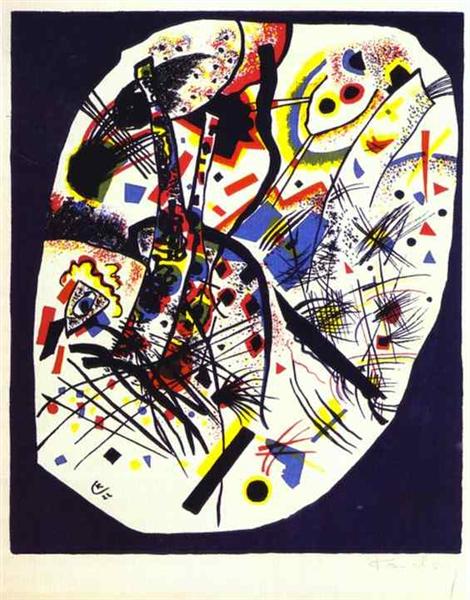
When Hana slowly and carefully falls in love with Kip, extraverted thinking enters the villa. Just as Sharp (1987) has described Te, Kip’s thinking is oriented to external reality. Kip’s painfully deliberate job carries intense stress with massive consequences to failure. Hypervigilant, he rushes up the hill when he hears Hana playing the piano, terrified she will activate a bomb (p. 75). However, there is no bomb, and Hana does not need saving. Her intuition works invisibly in the background, and she plays on, oblivious of his terror, thinking he came to listen to the music. The auxiliary function carried by Kip is a parental function, taking care of and assisting Hana. Parental love is not the wild-eyed blind animus love that possesses and takes over, but a conscious love that is necessary, is there when needed, and knows when to leave, just as Kip leaves in the end to live his Indian life while Hana returns to Canada.
The Trickster in the Child: Caravaggio
Typical of a hermetic character able to travel into the unconscious and back, Caravaggio belongs to both the present Italian villa and the desert flashback past where his peacetime skills as a thief were leveraged into spying for the Allies. Caravaggio has tracked down Hana out of his concern for her not only because she is his close friend’s daughter, but also because he bitterly suspects her English patient is the spy who betrayed him to his torturers, those who cut off his thumbs and forced his confession. In his duality, Caravaggio represents two different archetypal functions, the puer aeternus and the trickster. As the childhood “uncle” of Hana and the man she remembers making her laugh, Caravaggio represents childlike introverted feeling (Fi). As trickster extraverted feeling (Fe), he steals from others while making sure the advent calendar on their wall is open to the correct day. In his past, his thieving skills were used by British intelligence, and being a spy with hidden loyalties seems an appropriate profession for the tertiary function’s tricksterish shadow.
It is ironic that Caravaggio the thief seems to represent moralistic Fi when he is in the villa. Of the four egosyntonic functions, the child or puer/puella archetypal energy of the tertiary function is the one that most easily brings joy and love of life. Introverted feeling is “the ethical backbone of any … group” (Haas & Hunziker, 2011, p. 107), and in his combination as child and moralist, Caravaggio is a most unusual and ineffective thief. He does not really want to part people from their things, and Hana says he cares for the families he steals from by wanting to leave their homes in order. As a thief, Caravaggio’s strong sense of personal morality is clearly not based on the cultural collective, and as is typical of introverted feeling, he is “mainly concerned with the values that matter most to oneself” (Beebe, 2004, p. 96). Caravaggio also reveals himself as a puer aeternus when he acknowledges that “all his life he has avoided permanent intimacy. Till this war he has been a better lover than husband” (p. 116).
Caravaggio shows how different he was in the Libyan desert when he compares his time in the villa to his previous life as a spy, when everything he offered to those around him was a lie. He was like a “man in the darkness of a room, imitating the calls of a bird” (p. 117). Now he is thinking of the raw intimacy and honesty emerging among the unlikely group surrounding Hana where “they were shedding skins. They could imitate nothing but what they were. There was no defense but to look for the truth in others” (p. 117). This observation is an exquisite portrayal of Jung’s (1921/1971) description of Fi: “Still waters run deep” (p. 388).
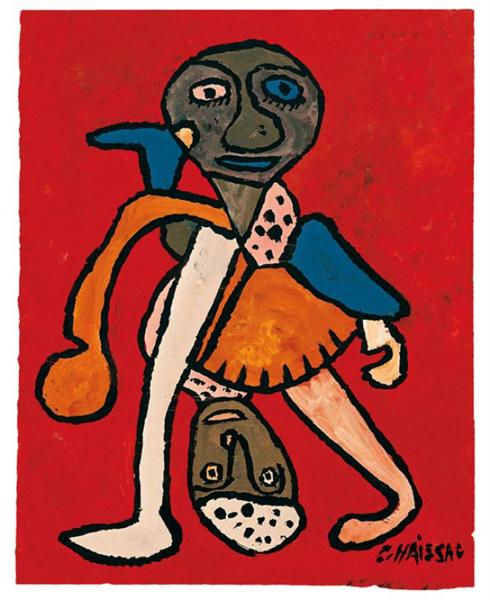
The love story between Almásy and Katharine brings forth the egodystonic shadow functions from deep in the unconscious. In particular, Caravaggio as trickster Fe carries “an energy triggering manipulation and paradox” (Shumate, in press). When “shadow-less” Caravaggio enters a darkened room to steal some film from a nameless woman who inadvertently captured his image on her camera, as befits a trickster, he uncovers himself and uses his nakedness as a disguise. However, he is caught out because car lights reveal his naked, thieving, stark shadow to the couple making love in the bed. Paradoxically, his efforts to protect his false identity by retrieving the film cause his true identity to be trapped in the headlights. Caravaggio the trickster tricks others but is also tricked himself. He recalls telling a “child years ago about the person who searched for his shadow—as he is now looking for this image of himself on a piece of film” (p. 38). Ironically, he finds his shadow somewhere else: his attempt to creep anonymously across the lovers’ room to the camera and steal this image is thwarted, and his shadow is projected onto the wall for all to see. A shadow has emerged, but not the one he was looking for—undoubtedly a sign of the trickster at work.
Von Franz (1971/2013) described the anima or animus function as the doorway through which “all the figures of the unconscious” proceed (p. 54). Accordingly, Caravaggio as the unconscious trickster is pulled into the villa through the “ever-bleeding wound” (p. 54) of Almásy—the archetypal Se animus. Caravaggio then rises to consciousness like Hermes, transformed by introverted feeling’s intense morality to want to establish justice by protecting Hana and making Almásy pay for his betrayal.
The Demon Lover: Almásy
Like Caravaggio, Almásy plays two roles, the capable man of the past and the helpless English patient of the present, representing how the demonic function shadows the animus. Before he was burned, Almásy was an attractive Hungarian explorer in the desert, good with maps, cars, and plans. Almásy is the bridge to the past, just as introverted sensation (Si) functions as the “memory keeper” of the psyche, primarily involved in recording and archiving the past (Shumate, in press). His ability to thrive in the brutal desert without apparent discomfort is reflective of how introverted sensation is more concerned with monitoring internal versus external body comfort (Beebe, 2004, p. 96). He was able to find his way alone on foot through the uncharted Sahara, unconcerned about the baking heat and driving wind.
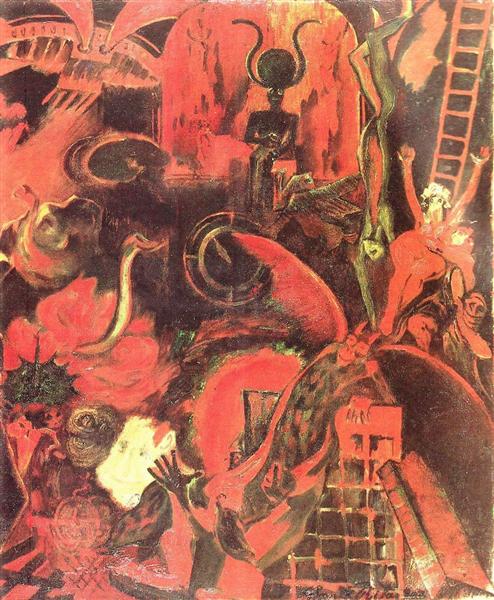
However, the demon lover in the desert becomes the inferior-function animus-burn patient in the villa, revealing the daimonic potential of the eighth function. Introverted sensation in the 8th position “can experience a memory that has an aspect of divine revelation” (Shumate, in press). Similarly, Almásy shows his attachment to history through his gigantic bible-like book of Herodotus’ The Histories, where he also collects clippings, letters, and photos from Katharine. Herodotus’ Histories was miraculously saved from his burning airplane, and this book is Almásy’s only possession. As the story unfolds, it is through pictures and letters of Katharine falling out of its pages that Almásy finds his way back to his identity and is finally able to die.
The demonic eighth function tests the integrity of the inferior fourth (Beebe, 2004, p. 111), and Almásy acquires integrity when, as the English patient in the villa, he is confronted by Caravaggio. A man of great independence who does not believe in borders and who prior to the war had no real affiliation with either side, Almásy is forced to face the larger implications for his British friends and colleagues when, blinded by his promise to British Katharine, he chooses to sell the Germans his maps for a chance to return to her in the cave. When Almásy faces his own demons through the honesty of his complex story, everyone in the villa begins to heal. His passionate love and burned body have caused intense suffering, including his own, but he is also Hana’s path to peace about her father’s death and her own return home.
Opposing Personality and Senex: Katharine the Terrible and Geoffrey
Almásy’s burning desire for his lost love Katharine is the total opposite of Hana’s quiet reserved love, stemming from her introverted intuition, and thus Katharine seems to represent the opposing personality archetype, extraverted intuition (Ne). With its antithetical energy, the opposing personality function is a malevolent and particularly difficult shadow function likely to be projected (Beebe, 2004, p. 107). Extraverted intuition sees possibilities where others may not have imagined them, and it may be the oppositional extraverted intuition in Katharine that first sees the possibilities in loving the withdrawn, solitary, and mysterious Almásy. She screams when she wakes next to her husband after having dreamed of Almásy and then asks him, “Who lays the crumbs of food that tempt you? Towards a person you never considered. A dream” (p. 150).
In fact, it is Katharine who lays out tempting paths to be explored. Her dreams awaken unknown possibilities in Almásy, too; he ends up driven crazy with desire yet trapped by an arid imagination that cannot believe she feels the same. But the enchantment with possibility stemming from Ne can lead to difficulty making choices, thus making a person seem irresponsible and lacking commitment or compassion (Shumate, in press). Unable to cope with the love between them and afraid of her husband’s fury, Katharine breaks it off with Almásy and destroys him. Katharine is the burning desire that Hana cannot actualize, and their paths never cross. Hana never asks from Kip more than he wants to give, allowing his love a wide independence unrecognizable in the suffocating burning love between Katharine and Almásy; but Hana’s and Kip’s relationship also lacks the energy needed to sustain it.
Katharine’s husband Geoffrey characterizes introverted thinking (Ti) in the 6th position as senex or witch, the final function-archetype in Beebe’s eight-function eight-archetype model. Geoffrey has accepted an undercover mission to map the desert for the British Intelligence Service, a brilliant metaphor for Ti functioning in shadow. Shumate (2009) described introverted thinking as able to use logic to adapt to the variations of a dynamic system (p. 50), and introverted thinking may be the only function willing to even try to capture in the lines of a map the constantly changing, unstable landmarks of the Sahara. However, Geoffrey also seems utterly unaware of the untoward consequences of leaving his wife alone in the desert for weeks in the company of men while he pursues his intelligence mission. His choice reminds us of how extraordinarily detached and oblivious to others’ feelings Ti can be.
When confronted with his wife’s infidelity, Geoffrey’s pride is wounded, and his response is exceptionally destructive. Representing tradition and structure, the senex grounds and disciplines and does not like change (Slater, 2005, p. viii). Geoffrey’s desire for revenge is the senex response to power by attempting to wield more power (Beebe, 2004, p. 105). He never confronts Katharine with his fury at her affair or asks her why, but instead seethes for years. His anger and hurt are valid, but because of his insecurity, Geoffrey is defensive and too afraid to lose what he holds most tightly. Beebe described this shadow archetype as “fighting dirty” when the personality or its values are threatened (2004, p. 105). One day, when he is supposed to fly into the desert and get Almásy, Geoffrey takes Katharine with him and kamikaze-style points his plane at the man waiting below. He misses Almásy, kills himself, and mortally wounds Katherine, who is ultimately left to die alone in a cave. Geoffrey would rather kill them all than face what is really happening.
My inner Geoffrey, introverted thinking, is the aspect of my personality that is least reflective and most sensitive to criticism. The witch’s words originate in the most insecure and fearful parts of me and are said to the people I love before I have a moment to consider their consequences. They are painful because they are true, and I accept she is uncontrollable when she is on the warpath, but by releasing defensiveness and listening to what is true in what she says, more capable and compassionate aspects of myself might learn to calm her fears and temper the sting of her words. For an INTJ, the key to this transformation lies in befriending Caravaggio the spy and his trickster, extraverted feeling. Becoming less afraid of extraverted feeling’s mirror and the unpredictability of its archetypal trickster is key to managing the potent criticism and dark forces of the witch/senex. Extraverted feeling cares about what others think and feel, and Beebe noted that the trickster’s indirect and unpredictable way of managing and diffusing power makes it the only archetype capable of influencing the witch or senex. Tragically, Geoffrey the senex and Caravaggio the trickster never meet, and unchecked, Geoffrey creates havoc and ruins three lives.
Finding Home, Finding the Hero

I can finally see Hana’s introverted intuition as heroic. Her Ni heroism is most obvious when extraverted thinking Kip is tricked while deactivating a mine. Kip screams for help and needs another pair of hands, and Hana rushes out to him. She grabs the two live wires he is holding so he can figure out what to do. Kip puts on his headphones, music blaring, and disappears into his mind, repeating slowly and out loud, “I don’t know … I don’t know” (Ondaatje, 1992, p. 101). Kip’s not knowing contrasts with Hana’s certainty: she knows absolutely she must stay, despite his protestations and terror that he will kill them both. Fully comprehending the risk, Hana assesses the scene and refuses to go, her Ni “knowing what is needed or should be done before others start to contemplate the ideas” (Shumate, 2019, p. 8). Ondaatje contrasts Hana’s approach to the mine with the inflation and obsession of the ungrounded introverted intuition that built the atom bomb; the introverted intuition of Hana and the extraverted thinking of Kip work together to deactivate the smaller bomb and show that when the superior function hero and the secondary parent function cooperate, good things happen.
The English Patient illuminates the moment in my past when I unknowingly accepted introverted intuition as my true heroine. Following an image of two handprints on a wall, I have also discovered the name for my hidden heroine in my previous career as a veterinary surgeon. I spent years believing I was not good enough for who I thought I should be in my difficult profession. I believed Te was the only valid way for a surgeon to think, because it was how I was trained and the only way I could logically explain my choices to others. Extraverted thinking was essential to my success as a medical professional, but it was not where I was at my best. As I became more experienced, and especially when things got complicated, introverted intuition made such rapid decisions that I could finish a surgery almost devoid of conscious logic. Night after night, I lay in bed second-guessing why I did what I did, tormented by the bad movies of my opposing personality Ne, creatively spinning the potential consequences of a mistake. Given my intensive training, I found it impossible to trust a decision I could not explain with logic. However, one fateful day, years into my career, my most important surgical mentor asked me, as I lamented my sleepless nights, “Tamara, how many of the cases you worry about postoperatively actually become the disasters you imagine?” I had known for a long time that my surgical complication rate was low, but it took this simple question from a man I trusted and respected to make conscious for me how few mistakes I actually made during stressful surgeries. I found great solace in trusting my intuitive decisions despite not knowing how they were made, and my sleepless nights mostly disappeared. Those were the best years of my veterinary surgical career, but it has taken all this time to understand that this was because I had found my elusive heroine—she who cannot be dissected with logic—at last.
References
Beebe, J. (2004). Understanding consciousness through the theory of psychological types. In J. Cambray & L. Carter (Eds.), Analytical psychology: Contemporary perspectives in Jungian analysis (pp. 83-115).
Beebe, J. (2005). Evolving the eight-function model. Association for Psychological Type Bulletin, Winter, 34-39.
Beebe, J. (2011). The Wizard of Oz: A vision of development in the American political psyche. In C. Hauke & L. Hockley (Eds.), Jung and film II: The return (pp. 302-327). London, UK: Routledge.
Haas, L. & Hunziker, M. (2011). Building blocks of personality type: A guide to using the eight-process model of personality type. Temecula, CA: TypeLabs.
Jung, C. (1971). Psychological types (R. F. C. Hull, Trans.) In H. Read et al., (Eds.), The collected works of C. G. Jung (Vol. 6). Princeton, NJ: Princeton University Press. (Original work published 1921)
Myers, I., & Myers, P. (1995). Gifts differing: Understanding personality type. Palo Alto, CA: Davies Black Publishing.
, M. (1992). The English patient. Toronto, ON: Vintage Books Canada
Sharp, D. (1987). Personality types: Jung’s model of typology. Toronto, CA: Inner City Books.
Shumate, M. C. (2009). The opposing personality: Recognizing the archetypal energy. Bulletin of Psychological Type, 32(2), 36-41.
Shumate, M. C. (2019). Psychological types: From the auxiliary function to archetypes. [Audio]. Retrieved from Pacifica Graduate Institute DesireToLearn site.
Shumate, M. C. (in press). Projection & personality type: Jung, Beebe, and the eightfold way [working title]. Forthcoming from Routledge, Oxon, UK and New York, NY.
Slater, G. (2005). Introduction. In G. Slater (Ed.), Senex & puer (pp. vii-xxiv). Putnam, CT: Spring Publications.
von Franz, M.-L. (1971). The inferior function. In M.-L. von Franz & J. Hillman, Lectures on Jung’s typology. Dallas, TX: Spring Publications.
Zaentz, S. (Producer) & Minghella, A. (Director). (1996) The English patient. [Motion picture]. United States: Tiger Moth Productions.
Images
Chagall, M. (1960). Profile and red child. Retrieved from wikiart.org
Chaissac, G. (1949). Untitled. Retrieved from wikiart.org
De Santa-Rita, G. (1904). Orfeu nos infernos (detail). Retrieved from wikiart.org
Hodler, F. (1892). Communication with the infinite. Retrieved from wikiart.org
Kandinsky, W. (1922). Small worlds iii. Retrieved from wikiart.org
Munch, E. (1896). Young woman on the shore. Retrieved from wikiart.org
Zaretsky, V. (1986). Eugenia. Retrieved from wikiart.org



